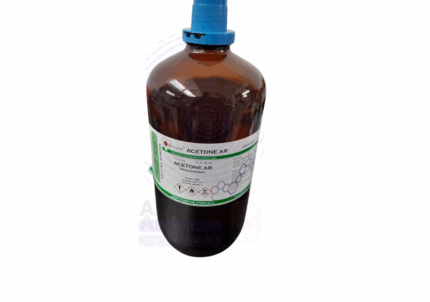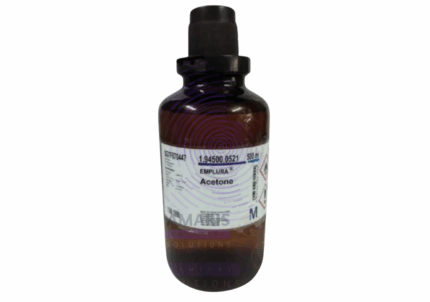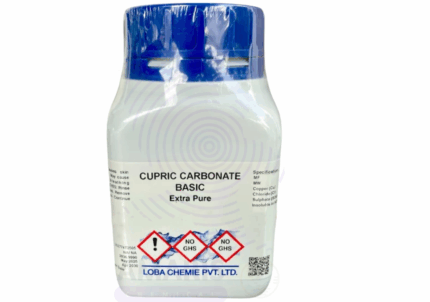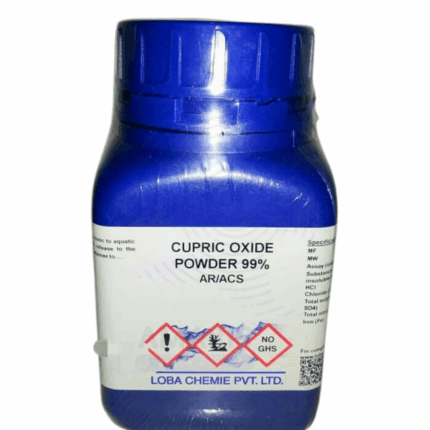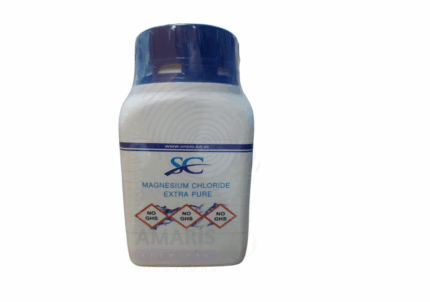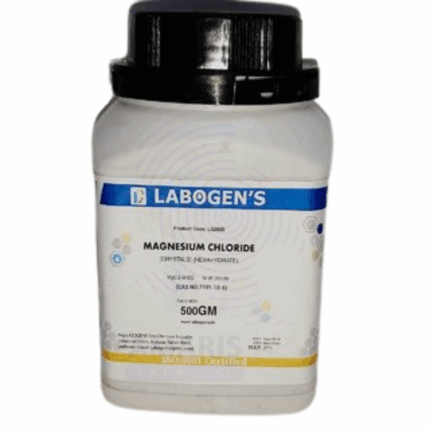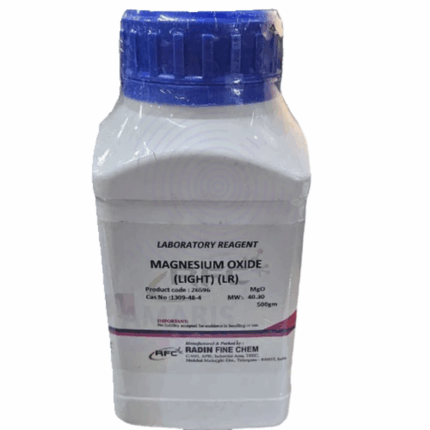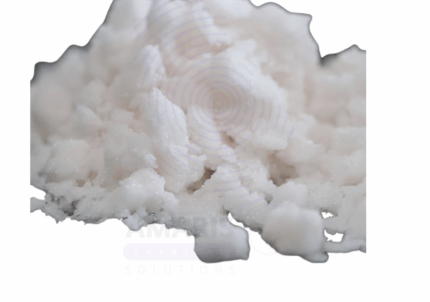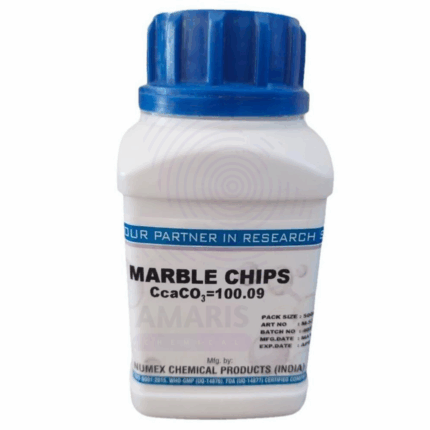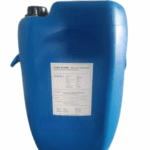
Magnesium Ribbon Extra Pure
$ 17.45 Original price was: $ 17.45.$ 17.34Current price is: $ 17.34.
Magnesium Ribbon Extra Pure is a highly reactive metallic strip known for its silvery appearance and clean-burning properties. It is widely used in laboratory demonstrations, particularly in combustion and oxidation experiments, where it burns with a bright white flame, showcasing exothermic reactions vividly. Due to its high purity, it ensures minimal contamination in analytical and research applications. Beyond academics, magnesium ribbon also finds niche uses in pyrotechnics, metal alloy production, and chemical synthesis where controlled reactivity and reliable performance are essential. Its lightweight and malleable nature make it easy to handle and ideal for precision experimental setups.
Magnesium Ribbon Extra Pure
Primary Uses
- Combustion and Flame Tests:
- Commonly used in demonstrations and experiments to illustrate combustion reactions and the production of intense white flame.
- Reagent in Redox Reactions:
- Acts as a reducing agent in reactions with acids and other oxidizing compounds (e.g., displacement of hydrogen from dilute acids).
- Standard Material in Thermochemistry:
- Burned in calorimetry experiments to measure enthalpy changes.
Secondary Uses
- Hydrogen Gas Generation:
- Reacts with dilute acids (e.g., HCl) to generate hydrogen gas for collection and study.
- Production of Magnesium Salts:
- Serves as a base material for preparing various magnesium-based compounds.
- Education and Demonstration:
- Frequently used in schools and colleges for basic chemistry demonstrations, particularly oxidation and light-emitting reactions.
| PACK SIZE |
25 grams Plastic Tin |
|---|
1. Basic Identification Attributes
- Chemical Name: Magnesium Ribbon
- Synonyms: Magnesium metal ribbon, Mg Ribbon
- CAS Number: 7439-95-4
- Molecular Formula: Mg
- Molecular Weight: 24.31 g/mol
- Appearance: Silvery-white, flexible metal strip
- Odor: Odorless
- Solubility: Reacts with acids; insoluble in water
- Grade: Extra Pure
- Physical Form: Thin metallic ribbon, typically in coils or rolls
2. Safety & Hazard Attributes
- GHS Classification:
- Flammable solid (Category 2)
- Hazard Statements:
- H228: Flammable solid
- H261: In contact with water releases flammable gases
- Precautionary Statements:
- P210: Keep away from heat/sparks/open flames
- P231 + P232: Handle under inert gas; protect from moisture
- P370 + P378: In case of fire, use dry sand or Class D fire extinguisher—never water
- Personal Protective Equipment (PPE):
- Flame-resistant lab coat
- Safety goggles or face shield
- Nitrile or flame-resistant gloves
- Use forceps or tongs when igniting
- First Aid Measures:
- Inhalation: Move to fresh air; seek medical help if symptoms persist
- Skin Contact: Wash with water; remove any metal residue
- Eye Contact: Rinse cautiously with water; consult physician
- Ingestion: Not typically ingested; seek immediate medical attention
- Fire Hazards:
- Burns with intense white flame
- Produces magnesium oxide smoke
- Do NOT use water, CO₂, or foam to extinguish fire
- Use Class D (dry powder) extinguisher or dry sand
3. Storage & Handling Attributes
- Storage Conditions:
- Store in a tightly sealed container
- Keep in a dry, cool place away from acids and oxidizing agents
- Avoid moisture and air exposure to prevent oxidation
- Handling Tips:
- Cut ribbon carefully; avoid generating dust or small fragments
- Do not handle near ignition sources or open flame
- Use under a fume hood when igniting
4. Laboratory Applications
- Primary Uses:
- Demonstrating combustion reactions in educational labs
- Single displacement reactions with dilute acids (e.g., Mg + HCl → H₂)
- Stoichiometric analysis in analytical chemistry
- Secondary Uses:
- Heat source in ignition of other metals or thermite reactions
- Reducing agent in inorganic syntheses
- Production of magnesium salts
SAFETY PRECAUTIONS
Personal Protective Equipment (PPE):
- Wear a lab coat, heat-resistant gloves, and safety goggles.
- Use tongs or forceps when handling during ignition experiments.
Handling:
- Handle with care; do not cut or bend excessively.
- Avoid contact with moisture, acids, or oxidizers.
- Do not ignite large quantities at once.
- Wash hands thoroughly after use.
Storage:
- Store in a cool, dry, and well-ventilated area.
- Keep away from water, acids, heat, and ignition sources.
- Store in a tightly sealed container, preferably under an inert atmosphere if long-term storage is needed.
FIRST AID MEASURES
Inhalation (of fumes):
- Remove to fresh air immediately.
- Seek medical attention if breathing difficulty or coughing occurs.
Skin Contact (burns from ignition):
- Cool the affected area with running water.
- Do not apply oils or creams.
- Cover with a sterile bandage and seek medical assistance.
Eye Contact (from flash or particles):
- Rinse eyes cautiously with clean water for several minutes.
- Remove contact lenses if easy to do.
- Seek immediate medical attention.
Ingestion:
- Do not ingest; metallic magnesium can react in the stomach.
- Rinse mouth with water.
- Seek urgent medical care.
FIRE FIGHTING MEASURES
Flammability:
- Highly flammable when ignited, especially as thin ribbon or powder.
- Burns with intense white light; avoid direct eye exposure.
Extinguishing Media:
- DO NOT USE WATER – reacts violently.
- Use Class D fire extinguishers (dry sand, graphite powder, or special dry chemical agents for metal fires).
Hazardous Combustion Products:
- Produces magnesium oxide smoke on burning.
Firefighter Protection:
- Wear self-contained breathing apparatus (SCBA) and full protective gear.
- Avoid contact with water during firefighting operations.


 Preservatives(food)
Preservatives(food) Flavor Enhancers
Flavor Enhancers Acidulants
Acidulants Sweeteners
Sweeteners Antioxidants
Antioxidants Colorants(food)
Colorants(food) Nutraceutical Ingredients (food)
Nutraceutical Ingredients (food) Nutrient Supplements
Nutrient Supplements Emulsifiers
Emulsifiers
 Collectors
Collectors Dust Suppressants
Dust Suppressants Explosives and Blasting Agents
Explosives and Blasting Agents Flocculants and Coagulants
Flocculants and Coagulants Frothers
Frothers Leaching Agents
Leaching Agents pH Modifiers
pH Modifiers Precious Metal Extraction Agents
Precious Metal Extraction Agents
 Antioxidants(plastic)
Antioxidants(plastic) Colorants (Pigments, Dyes)
Colorants (Pigments, Dyes) Fillers and Reinforcements
Fillers and Reinforcements Flame Retardants
Flame Retardants Monomers
Monomers Plasticizers
Plasticizers Polymerization Initiators
Polymerization Initiators Stabilizers (UV, Heat)
Stabilizers (UV, Heat)
 Antifoaming Agents
Antifoaming Agents Chelating Agents
Chelating Agents Coagulants and Flocculants
Coagulants and Flocculants Corrosion Inhibitors
Corrosion Inhibitors Disinfectants and Biocides
Disinfectants and Biocides Oxidizing Agents
Oxidizing Agents pH Adjusters
pH Adjusters Scale Inhibitors( water)
Scale Inhibitors( water)
 Antioxidants(cosmetic)
Antioxidants(cosmetic) Emollients
Emollients Fragrances and Essential Oils
Fragrances and Essential Oils Humectants
Humectants Preservatives
Preservatives Surfactants(cosmetic)
Surfactants(cosmetic) Thickeners
Thickeners UV Filters
UV Filters
 Fertilizers
Fertilizers Soil Conditioners
Soil Conditioners Plant Growth Regulators
Plant Growth Regulators Animal Feed Additives
Animal Feed Additives Biostimulants
Biostimulants Pesticides (Herbicides, Insecticides, Fungicides)
Pesticides (Herbicides, Insecticides, Fungicides)
 Active Pharmaceutical Ingredients (APIs)
Active Pharmaceutical Ingredients (APIs) Excipients
Excipients Solvents(pharmaceutical)
Solvents(pharmaceutical) Antibiotics
Antibiotics Antiseptics and Disinfectants
Antiseptics and Disinfectants Vaccine Adjuvants
Vaccine Adjuvants Nutraceutical Ingredients (pharmaceutical)
Nutraceutical Ingredients (pharmaceutical) Analgesics & Antipyretics
Analgesics & Antipyretics
 Analytical Reagents
Analytical Reagents Solvents(lab)
Solvents(lab) Chromatography Chemicals
Chromatography Chemicals Spectroscopy Reagents
Spectroscopy Reagents microbiology-and-cell-culture-reagents
microbiology-and-cell-culture-reagents Molecular Biology Reagents
Molecular Biology Reagents Biochemical Reagents
Biochemical Reagents Inorganic and Organic Standards
Inorganic and Organic Standards Laboratory Safety Chemicals
Laboratory Safety Chemicals Specialty Laboratory Chemicals(Special Laboratory Equipment)
Specialty Laboratory Chemicals(Special Laboratory Equipment)
 Demulsifiers
Demulsifiers Hydraulic Fracturing Fluids
Hydraulic Fracturing Fluids Scale Inhibitors(oil)
Scale Inhibitors(oil) Surfactants(oil)
Surfactants(oil) Drilling Fluids
Drilling Fluids
 Dyes and Pigments
Dyes and Pigments Bleaching Agents
Bleaching Agents Softening Agents
Softening Agents Finishing Agents
Finishing Agents Antistatic Agents
Antistatic Agents
 Admixtures
Admixtures Waterproofing Agents
Waterproofing Agents Sealants and Adhesives
Sealants and Adhesives Curing Compounds
Curing Compounds Concrete Repair Chemicals
Concrete Repair Chemicals Anti-Corrosion Coatings
Anti-Corrosion Coatings
 Surfactants(cleaning)
Surfactants(cleaning) Builders
Builders Enzymes
Enzymes Solvents (Cleaning)
Solvents (Cleaning) Fragrances
Fragrances
 Electronic Chemicals
Electronic Chemicals Catalysts
Catalysts Lubricants
Lubricants Photographic Chemicals
Photographic Chemicals Refrigerants
Refrigerants Automotive chemicals
Automotive chemicals Pyrotechnic Chemicals
Pyrotechnic Chemicals
 Biodegradable Surfactants
Biodegradable Surfactants Bio-based Solvents
Bio-based Solvents Renewable Polymers
Renewable Polymers Carbon Capture Chemicals
Carbon Capture Chemicals Wastewater Treatment Chemicals
Wastewater Treatment Chemicals
 Pigments
Pigments Solvents(paint)
Solvents(paint) Specialty Coatings
Specialty Coatings Binders/Resins
Binders/Resins Additives
Additives Driers
Driers Anti-Corrosion Agents
Anti-Corrosion Agents Functional Coatings
Functional Coatings Application-Specific Coatings
Application-Specific Coatings
 Fresh Herbs
Fresh Herbs Ground Spices
Ground Spices Whole Spices
Whole Spices Spice Blends
Spice Blends Dried Herbs
Dried Herbs
 Leavening Agents
Leavening Agents Dough Conditioners
Dough Conditioners Flour Treatments
Flour Treatments Fat Replacers
Fat Replacers Decoratives
Decoratives Preservatives(baking)
Preservatives(baking)
 Plasticizers & Softeners
Plasticizers & Softeners Reinforcing Agents
Reinforcing Agents Adhesion Promoters
Adhesion Promoters Vulcanizing Agents
Vulcanizing Agents Antidegradants
Antidegradants Blowing Agents
Blowing Agents Fillers & Extenders
Fillers & Extenders Accelerators & Retarders
Accelerators & Retarders


